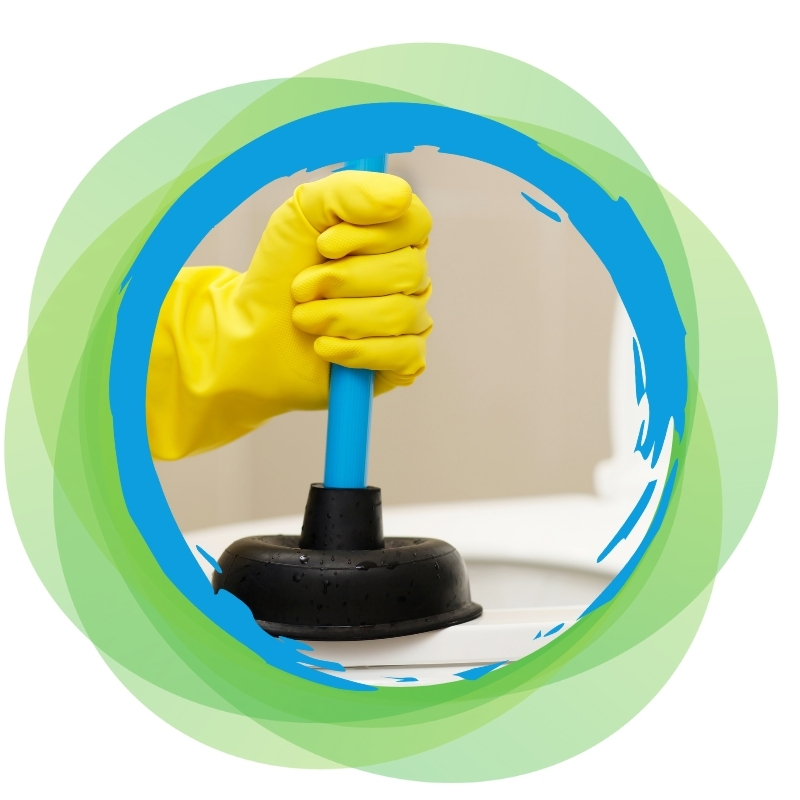A blocked toilet drain is more than just a nuisance—it can disrupt your day and lead to costly repairs if not addressed promptly. Whether you’re dealing with slow flushing, strange noises, or water backing up, the signs of a blockage should never be ignored. These issues can sneak up over time, often going unnoticed until it’s too late. That’s why knowing the causes and staying proactive with prevention matters. Poor flushing habits, hidden plumbing faults, and skipped maintenance are all culprits that can trigger a frustrating clog. This blog explores practical strategies to prevent and effectively address toilet blockages.
What common mistakes lead to a blocked toilet drain?
Blocked toilet drains rarely occur without warning, and most are caused by everyday habits that can easily be changed. Identifying the behaviours that lead to clogs is the first step in avoiding a repeat problem.
- Flushing inappropriate items: Items such as baby wipes, cotton swabs, dental floss, and feminine hygiene products don’t break down in water and can quickly accumulate in the pipes.
- Ignoring early signs: Many people shrug off slow drainage or bubbling sounds, assuming they’ll go away. These are red flags of developing issues.
- Using chemical drain cleaners: While convenient, they can damage pipes with repeated use and sometimes worsen clogs by pushing debris deeper.
- Neglecting regular maintenance: A quick check of the cistern and water flow now and then could prevent major repairs down the track.
Avoiding these common pitfalls can significantly reduce the chance of developing a blocked toilet drain, saving time, stress, and money.
Why do blocked toilet drains often go unnoticed until it’s too late?
Blockages usually build up over time. Unlike a sudden burst pipe, they’re subtle, making it easy to ignore until you’ve got a full-blown mess on your hands.
- Slow flushing: If the water isn’t clearing the bowl as quickly or completely as it used to, there may already be a partial obstruction.
- Unusual noises: Gurgling or bubbling noises from your toilet or nearby sink indicate air pockets caused by a blockage in the line.
- Frequent clogs: If you’re plunging every week, that’s not normal. There could be a build-up in the pipes, causing persistent issues.
- Water backing up: If water rises in the bowl or, worse, starts to overflow, the blockage is already severe.
Overlooking these signs only exacerbates the problem. Recognising them early helps prevent minor issues from escalating into full-blown toilet blocked drain emergencies.
Could ignoring minor clogs lead to costly toilet repairs?
Minor clogs may seem harmless, but they can put unexpected pressure on your plumbing system. That pressure builds over time and leads to expensive consequences.
- Pipe damage: Constant strain on your pipes, especially older ones, can cause cracks or leaks.
- Sewer backups: Wastewater returning through drains is not only disgusting—it’s a serious health risk and often requires professional clean-up.
- Increased repair costs: The longer a blockage is left untreated, the more complex and costly the fix becomes.
- Structural damage: Overflowing water or hidden leaks can warp floorboards, rot walls, and damage subflooring, especially in older homes.
Staying alert to minor issues and addressing them early can prevent these hidden plumbing headaches.
Which methods actually work to unblock a toilet?
There’s no shortage of quick-fix tricks online, but not all of them are safe or effective. Here are a few reliable options worth trying:
- Plunger: Still the go-to for most clogs. A flange plunger creates better suction and is more effective than the standard cup style.
- Hot water and dish soap: Pour hot (not boiling) water and a generous squirt of dish soap into the bowl. It can help break up soft material, which can cause the blockage.
- Toilet auger: Also known as a plumber’s snake, this tool is ideal for reaching deeper blockages that a plunger can’t shift.
- Baking soda and vinegar: Pour one cup of baking soda, followed by one cup of vinegar, into the bowl. Let it fizz, then flush after 10–15 minutes.
For persistent or complex clogs, it’s safest to explore reliable solutions for recurring blocked toilet drains through experienced professionals who can address the issue without damaging your plumbing.
How does regular maintenance prevent toilet blockages long-term?
Routine maintenance can be the difference between a one-off issue and a costly repeat problem. Prevention is always cheaper than emergency plumbing.
| Type of Maintenance | What It Involves | Why It Matters |
| Flush discipline | Only flushing waste and toilet paper | Prevents foreign object blockages |
| Check the water flow | Inspect the flush power and tank fill speed | Keeps flushing efficiently and consistently |
| Watch for leaks | Look for drips or water pooling at the base | Stops damage before it spreads |
| Annual plumbing check-up | Get a licensed plumber to inspect the system | Catches hidden issues before they worsen |
Staying on top of these simple checks reduces the chance of a blocked drain toilet forming quietly in the background. Plus, if you’re in a larger household, these problems can develop faster. Knowing when to schedule inspections and understanding how to fix blocked toilet solutions goes a long way in protecting your pipes.
When is it better to call a professional than try a DIY approach?
DIY can save you a few bucks, but there are times when the smarter (and safer) move is to leave it to a licensed plumber.
- Recurring issues: If you’ve plunged more than a couple of times this month, the blockage might be further down the line.
- Multiple fixture backups: If the toilet, bathroom sink, and shower are all slow or clogged, it’s likely a main sewer line problem.
- Unpleasant odours: Foul smells around the bathroom could mean trapped gases or decaying waste, neither of which should be ignored.
- Overflowing toilets: If flushing results in rising water or spills, stop using it immediately and call in a professional.
In situations like these, guesswork can do more harm than good. A licensed expert can inspect, diagnose, and resolve the issue without risking further damage to your plumbing or home. Whether the job involves clearing a clog or identifying the root cause of a blocked toilet drain, timely action is crucial.
Final thoughts on avoiding a blocked toilet drain
Avoiding a blocked toilet drain isn’t complicated—it just takes a bit of consistency. Be mindful of what’s going down the toilet. Notice when flushing gets sluggish or noises change. Don’t wait for water to spill onto the floor before taking action. And when things get tricky or a clog won’t budge, there’s always a helpful walkthrough from Eco Plumbers to guide the next steps.

